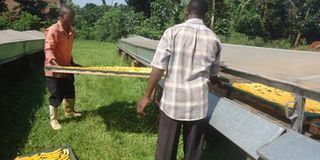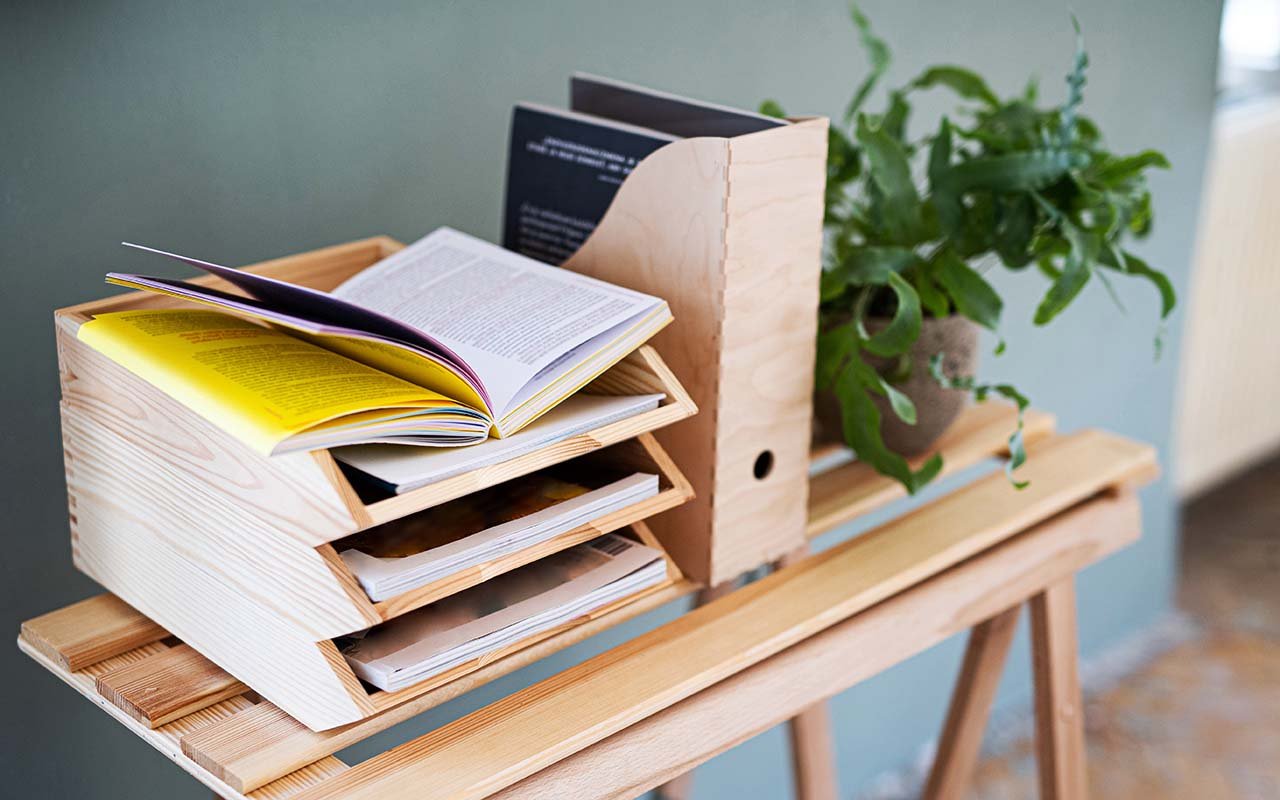Prime
‘I have no regrets for quitting tailoring to practise farming

Naluwayiro puts sliced pawpaw in a solar driers. Photo by Fred Muzaale
What you need to know:
For 10 years, Charles Naluwayiro was a tailor but it did not earn him as much he wanted. Eventually, he switched to fruit farming from which he started to earn more income. He spoke to Fred Muzaale about his journey from tailoring to farming.
I am Charles Naluwayiro aged 45 years, a resident of Ndeeba village, Kayunga Sub-county in Kayunga District. I grow pineapples and paw paws to which I add value to my produce by sun-drying them.
I own two acres of pineapples and one acre of pawpaws. I have been doing farming since 1993. Before that I was a tailor for 10 years. I even have a certificate in tailoring.
However, I decided to switch because earnings were seasonal. For instance, I used to get a good number of customers during Christmas and when parents prepared for school uniforms for their children.
The change
Because of this, the income would not enable me look after my family as I desired. As a fruit farmer, at first I sold the produce to my customers in a fresh form.
This made me to incur some losses, especially during periods, when the supply of fruits is high on the market and the demand low.
During such periods, I got little money because I had no way of preserving the fruits as I waited for the prices to rise. Also, some of the fruits got spoilt in transit to the market.
In 1999, a group of Europeans visited my village. As they toured the area, they came across many pineapple gardens.
They asked us if we (farmers) had a way to preserve the fruits for export to European market. We told them we did not have a method of doing so. We depended on nature.
They got concerned about our plight; we were losing a lot of income by selling fresh fruits. They asked me if I was willing to go for training in making of solar driers at Kawanda agricultural research institute.
They wanted us to preserve the fruits by drying them using heat from the sun. I gladly took the offer.
It was a two-weeks training, I learned how to make a solar drier that could handle 3kg of dried fruits. However, it was too small to handle the amount of fruits we had.
When I returned home, I bought pieces of timber, a polythene bag, nails and iron sheets from which I made the drier. In total, I spent about Shs500, 000 on the materials. Such a drier can last about one year. I used the knowledge I acquired to design a bigger drier. I now have 23 solar driers.
How I do it
First, I ensure that the place where I cut the fruits is clean. I then pick the ripe fruits. I wash them with clean water.
Next I peel the fruits with a clean knife. I use sharp stainless knives to slice the fruits. The pieces should not be of varying thickness and length because they will look unattractive during packaging.
Thick pieces take longer to dry but also very thin pieces stick on drying trays.After slicing I place the pieces trays. I place them in the driers.
During sunny weather, it takes only three days to dry. The slices should left to dry fully to avoid becoming mouldy in a short time.
When they are dry the slices are removed. This should be done in the afternoon when there is less humidity in the atmosphere. The humidity spoils the dry fruits.
Market for produce
When I remove the dried slices, I store them in a clean place. I sell them to Fruit of the Nile, a company that packs and exports them. This company is my main customer; however, I also sell in small quantities of one or a half kilogramme to individual buyers. In a week I can produce about 500kg of dried fruits.
I am paid Shs7,000- Shs8,000 per kilo depending on the amount of supply on the market. They pay me cash.
By drying my fruits I earn more than when I sell fresh fruits. Five pawpaws can make 1kg of dried paw paws. I used to sell each fresh pawpaw at Shs700 each.
So by selling five fresh pawpaws I earn Shs3,500. When I dry the same amount of fruits, I earn between Shs7,000 and 8,000 per kilo. Because my garden alone cannot sustain the market production requirements, I also buy from other farmers. Usually, I pay them cash.
We have formed a farmer’s association called, Patience Pays Initiative.
Through the association, we bargain for higher prices for our produce and also exchange ideas on how to improve our farming techniques. It has 68 members, all of them farmers.
Achievements
Through farming and adding value to my produce, I have been able to better my standard of living.
My children now go to better schools than when I was a tailor. Also, the many workshops I have attended on how to preserve food have given me more exposure and skills.
Challenges
My biggest challenge is the weather. During the rainy season the fruits don’t get enough heat so they get spoilt.
Another challenge I face is the type of drier, I use as they are not long lasting. This makes me make new ones almost every one year.
This challenge will be overcome if I get driers, which are metallic but they are expensive as they cost about Shs3m.
Future plans
In future, I plan to increase my production, which will necessitate me to buy more solar driers. I also want to construct a big warehouse that can accommodate the produce. I plan to start drying other fruits such as mangoes and sweet bananas.




